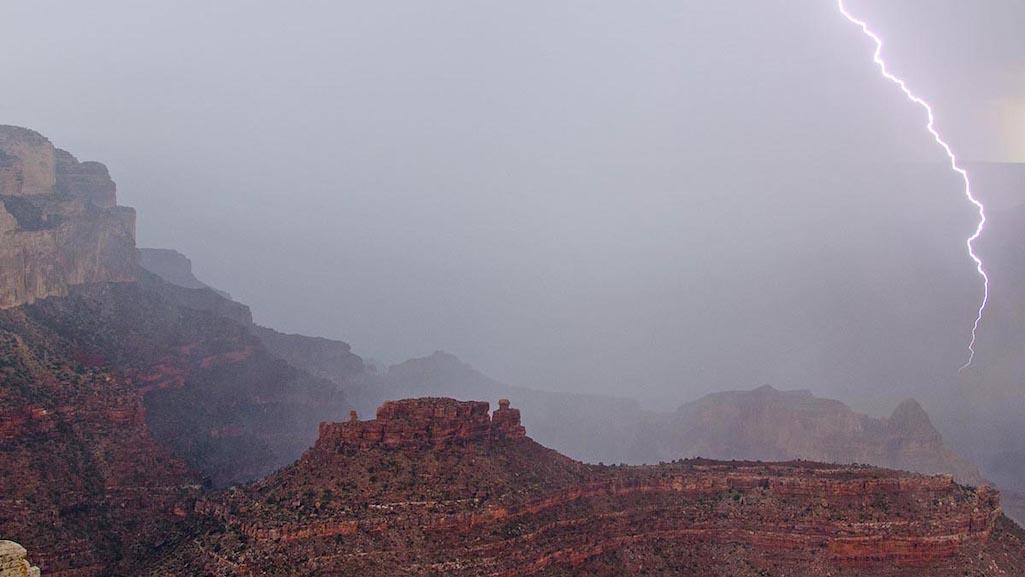
A group of Grand Canyon National Park visitors was injured by a lightning strike/NPS file
A lightning strike at the top of the Bright Angel Trail in Grand Canyon National Park injured a small group of visitors, including two who were knocked unconscious by the bolt and had to be hospitalized.
According to a park release, the bolt hit shortly before 3 p.m. local time Tuesday. A 30-year-old male and 28-year-old female victim were initially found unresponsive; the male regained consciousness without intervention while CPR and advanced life-saving interventions were needed to revive the woman, the release said.
Due to significant storm activity, both patients were transported by ground to the Flagstaff Medical Center. The female was reported to be in stable condition at a regional burn center Wednesday, and the man was still hospitalized, according to the park.
At least two other patients self-transported to the Grand Canyon Clinic with "lightning splash" injuries -- minor burns not related to a direct hit, said Grand Canyon spokesperson Kaitlyn Thomas.
"There were other people who were complaining of sensations and minor burns, but all of those refused care,” said Thomas.
This lightning strike is a reminder that monsoon season brings not only rain, but dangerous and potentially life-threatening lightning during thunderstorms. Serious injuries and fatalities have occurred at Grand Canyon National Park as a result of lightning strikes. Visitors to the park are reminded that if the sound of thunder follows a lightning flash within 30 seconds or less, they should seek shelter in a building or vehicle or proceed to the nearest bus stop to get on a park shuttle.
Lightning can strike two points up to 10 miles (16 km) apart at the same time. In Grand Canyon National Park, lightning strikes an average of 25,000 times per year.



Comments
I was there on the same trail on July 20th in the afternoon when it started pouring rain, followed by thunder. Did not see the lightning but knew it was there. We were told not to stand under a tree for protection, but there was literally nowhere else to go. We were a mile in to a hike, but had a mile to the nearest shelter. We walked back as quickly as we could, but there were no shelters anywhere to protect us. My question if lightning strikes are so common, wouldn't it be a good idea to build shelters for tourists who are stuck & can't find shelters anywhere for 30 min walking either direction. About 20 min after we got back to the train origin & hotel, we heard many ambulances coming. Many of us standing around there wondered if there had been a lightning strike with so many emergency vehicles coming. We were scared but had no choice but to keep walking back in the middle of a storm. Glad my family was not hurt, but pray for those who were not so lucky.
We were right there when the strike hit yet just walked past for it struck behind us. We knew right away when the thunder hit to run for shelter for it was right above us. When we heard the sirens immediately after, we knew too people were hit for there were so many emergency vehicles. We prayed all night and the next day for the people hurt.
We were there wed and all hell and fury broke loose...never got to see anything at sll... buses stopped running and lightening strike all around the parking lot at visitor center